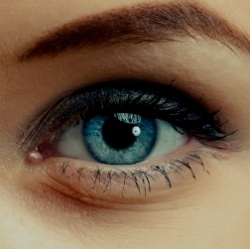
Scientists have discovered a cell in the retina that may cause myopia when it dysfunctions. The dysfunction may be linked to the amount of time a child spends indoors and away from natural light. "This discovery could lead to a new therapeutic target to control myopia," said Greg Schwartz, lead investigator and assistant professor of ophthalmology at Northwestern University.
More than a billion people in the world have myopia, whose incidence is rising and is linked to how much time people spend indoors as children.
The newly discovered retinal cell — which is highly sensitive to light — controls how the eye grows and develops. If the cell instructs the eye to grow too long, images fail to be focused on the retina, causing nearsighted vision and a lifetime of corrective glasses or contact lenses.
"The eye needs to stop growing at precisely the right time during childhood," Schwartz said.
It has long been long known the retina contains a signal to focus the image in the eye, and this signal is important for properly regulating eye growth during childhood.
"But for years no one knew what cell carried the signal," Schwartz said. "We potentially found the key missing link, which is the cell that actually does that task and the neural circuit that enables this important visual function."
Schwartz named the cell, "ON Delayed," in reference to its slow responses to lights becoming brighter. The cell was unique among many other cell types tested in its exquisite sensitivity to whether an image was in focus.
He described the neural circuit as the diagram that reveals how this cell is wired to other cells in the retina to acquire this unique sensitivity.
How too much time indoors may trigger myopia
The indoor light spectrum has high red/green contrast, which activates these clusters of photoreceptors in the human eye, creating the equivalent of an artificial contrast image on the retina. It’s likely the human version of the ON Delayed retinal ganglion cell would be overstimulated by such patterns, causing aberrant over-growth of the eye, leading to myopia, Schwartz said.
